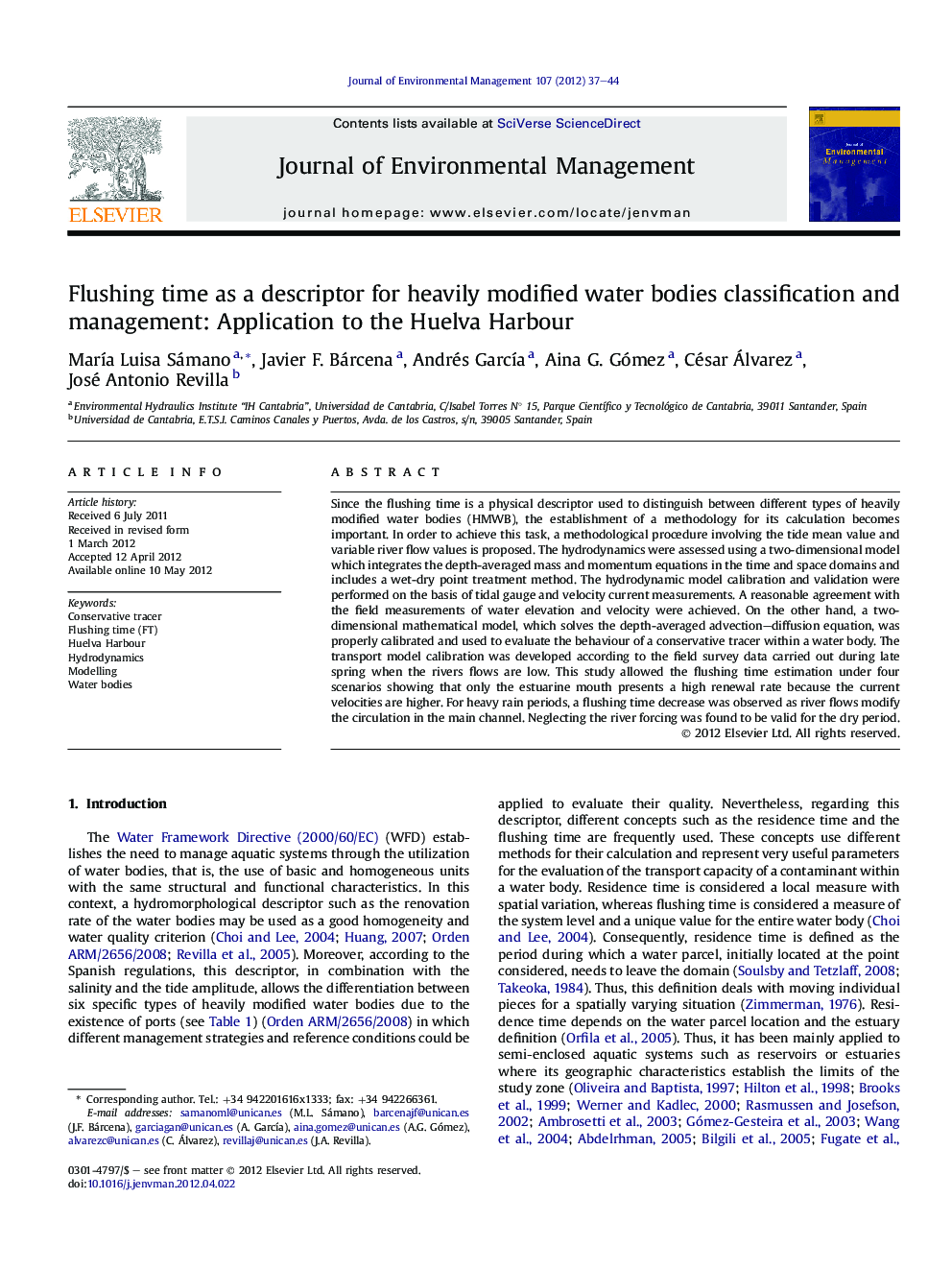| Article ID | Journal | Published Year | Pages | File Type |
|---|---|---|---|---|
| 1056661 | Journal of Environmental Management | 2012 | 8 Pages |
Since the flushing time is a physical descriptor used to distinguish between different types of heavily modified water bodies (HMWB), the establishment of a methodology for its calculation becomes important. In order to achieve this task, a methodological procedure involving the tide mean value and variable river flow values is proposed. The hydrodynamics were assessed using a two-dimensional model which integrates the depth-averaged mass and momentum equations in the time and space domains and includes a wet-dry point treatment method. The hydrodynamic model calibration and validation were performed on the basis of tidal gauge and velocity current measurements. A reasonable agreement with the field measurements of water elevation and velocity were achieved. On the other hand, a two-dimensional mathematical model, which solves the depth-averaged advection–diffusion equation, was properly calibrated and used to evaluate the behaviour of a conservative tracer within a water body. The transport model calibration was developed according to the field survey data carried out during late spring when the rivers flows are low. This study allowed the flushing time estimation under four scenarios showing that only the estuarine mouth presents a high renewal rate because the current velocities are higher. For heavy rain periods, a flushing time decrease was observed as river flows modify the circulation in the main channel. Neglecting the river forcing was found to be valid for the dry period.
Graphical abstractFigure optionsDownload full-size imageDownload as PowerPoint slideHighlights► Flushing time is a good descriptor for heavily modified water body differentiation. ► Box division allows the application of specific criteria and management strategies. ► Box division considers the complexity and variable spatial behaviour. ► Smaller velocities cause an increase in flushing time.
